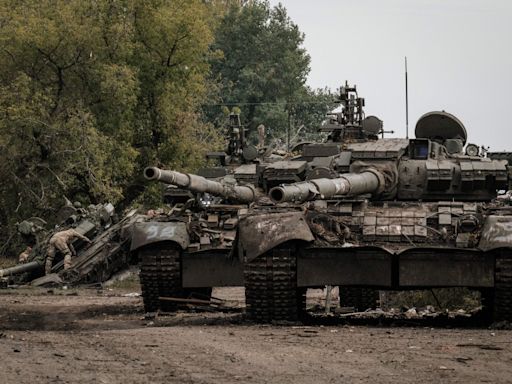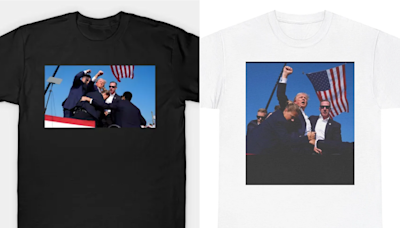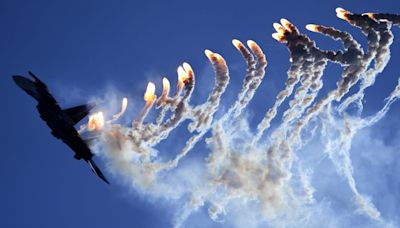Search results
There is nothing more satisfying than climbing in a huge tank, rotating your 90mm cannon and blasting an opposing vehicle or structure into oblivion! Tank games are so much fun, and our tank titles cover every angle this genre has to offer; from realistic 3D tank shooters to fun cartoon tank arcade games. Popular multiplayer tank games
- BattleDudes.ioDiep.ioRocket Bot RoyaleDerby Crash 4Derby Crash 5STUG (.io)War of TanksStickman World WarTank OffBlockTanks.io
- BattleDudes.ioTankCraftTanks vs Zombies: Tank BattleRocket Bot RoyaleDiep.io
- Tank games allow you to literally jump into the cockpit of some gigantic war machines and enter a myriad of different war-torn locations. You will...
A tank is an armoured fighting vehicle intended as a primary offensive weapon in front-line ground combat. Tank designs are a balance of heavy firepower, strong armour, and battlefield mobility provided by tracks and a powerful engine; their main armament is often mounted within a turret.
- Overview
- Earliest developments
- World War I
- GeneratedCaptionsTabForHeroSec
tank, any heavily armed and armoured combat vehicle that moves on two endless metal chains called tracks. Tanks are essentially weapons platforms that make the weapons mounted in them more effective by their cross-country mobility and by the protection they provide for their crews. Weapons mounted in tanks have ranged from single rifle-calibre machine guns to, in recent years, long-barreled guns of 120- or 125-mm (4.72- or 4.92-inch) calibre.
This article discusses the development of tanks from the beginning of the 20th century to the present. For articles on related military platforms, see amphibious assault vehicle and armoured vehicle.
The use of vehicles for fighting dates to the 2nd millennium bce, when horse-drawn war chariots were used in the Middle East by the Egyptians, Hittites, and others as mobile platforms for combat with bows and arrows. The concept of protected vehicles can be traced back through the wheeled siege towers and battering rams of the Middle Ages to similar devices used by the Assyrians in the 9th century bce. The two ideas began to merge in the battle cars proposed in 1335 by Guido da Vigevano, in 1484 by Leonardo da Vinci, and by others, down to James Cowen, who took out a patent in England in 1855 for an armed, wheeled, armoured vehicle based on the steam tractor.
But it was only at the beginning of the 20th century that armoured fighting vehicles began to take practical form. By then the basis for them had become available with the appearance of the traction engine and the automobile. Thus, the first self-propelled armoured vehicle was built in 1900 in England when John Fowler & Company armoured one of their steam traction engines for hauling supplies in the South African (Boer) War (1899–1902). The first motor vehicle used as a weapon carrier was a powered quadricycle on which F.R. Simms mounted a machine gun in 1899 in England. The inevitable next step was a vehicle that was both armed and armoured. Such a vehicle was constructed to the order of Vickers, Sons and Maxim Ltd. and was exhibited in London in 1902. Two years later a fully armoured car with a turret was built in France by the Société Charron, Girardot et Voigt, and another was built concurrently in Austria by the Austro-Daimler Company.
Britannica Quiz
Military History Buff Quiz
The outbreak of World War I in 1914 radically changed the situation. Its opening stage of mobile warfare accelerated the development of armoured cars, numbers of which were quickly improvised in Belgium, France, and Britain. The ensuing trench warfare, which ended the usefulness of armoured cars, brought forth new proposals for tracked armoured vehicles. Most of these resulted from attempts to make armoured cars capable of moving off roads, over broken ground, and through barbed wire. The first tracked armoured vehicle was improvised in July 1915, in Britain, by mounting an armoured car body on a Killen-Strait tractor. The vehicle was constructed by the Armoured Car Division of the Royal Naval Air Service, whose ideas, backed by the First Lord of the Admiralty, Winston S. Churchill, resulted in the formation of an Admiralty Landships Committee. A series of experiments by this committee led in September 1915 to the construction of the first tank, called “Little Willie.” A second model, called “Big Willie,” quickly followed. Designed to cross wide trenches, it was accepted by the British Army, which ordered 100 tanks of this type (called Mark I) in February 1916.
Students save 67%! Learn more about our special academic rate today.
Learn More
Simultaneously but independently, tanks were also developed in France. Like the very first British tank, the first French tank (the Schneider) amounted to an armoured box on a tractor chassis; 400 were ordered in February 1916. But French tanks were not used until April 1917, whereas British tanks were first sent into action on September 15, 1916. Only 49 were available and their success was limited, but on November 20, 1917, 474 British tanks were concentrated at the Battle of Cambrai and achieved a spectacular breakthrough. These tanks, however, were too slow and had too short an operating range to exploit the breakthrough. In consequence, demand grew for a lighter, faster type of tank, and in 1918 the 14-ton Medium A appeared with a speed of 8 miles (13 km) per hour and a range of 80 miles (130 km). After 1918, however, the most widely used tank was the French Renault F.T., a light six-ton vehicle designed for close infantry support.
Learn about the development of tanks from ancient war chariots to modern armoured combat vehicles. Explore the origins, types, and roles of tanks in World War I and beyond.
Learn about the history and evolution of armored vehicles from WW1 to the modern era. Explore articles, illustrations, and suggestions on tanks, prototypes, and related topics.
In 1918, the Renault FT light tank was the first tank in history with a "modern" configuration: a revolving turret on top and an engine compartment at the rear; it would be the most numerous tank of the war.
Jan 2, 2020 · Modern battle tanks of the world. Top 20 Modern Tanks in existence - battle tank speed, battle tank specifications, facts, photos and more.
Tank - Armoured Warfare, WWII, Mobility: The most effective tank force proved to be the German, composed in 1939 of 3,195 vehicles, including 211 Pz. IVs. What made the German panzers so formidable was that, instead of being divided between various infantry and cavalry tank units, they were all concentrated and used in massed formations in the ...






